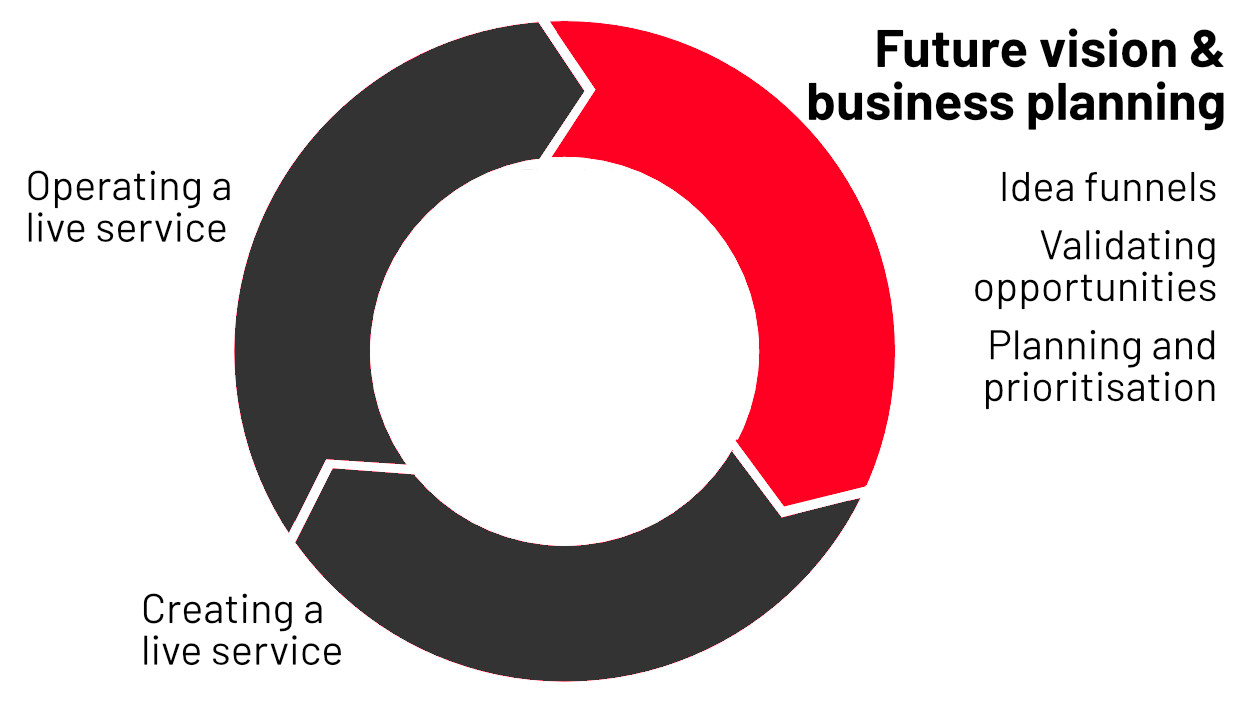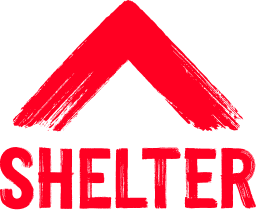Future vision and business planning
Where should Shelter commit its digital time, resources, and thinking? Where can we make the greatest difference? How do we capture, generate, assess and validate new ideas and genuine opportunities?
These questions are part of building a vision of future digital work, and shaping it into viable and valuable products and services. Perhaps more importantly, they define how we can build business agility, and be able to respond effectively and efficiently to new opportunities.

This phase of the digital lifecycle is our mechanism of change. To meet the evolving needs of people - those facing housing issues and those supporting our work - we need to innovate effectively and with purpose.
Idea funnels
We have various consistent sources of new ideas:
Existing digital services - Operating live services are perhaps our best learning labs. Measuring their performance and user feedback, and adding to our insight through user research. We might decide to optimise or build on an existing service or product, decommission and replace it with new solutions
Offline services - New digital ideas are often generated through face-to-face services. As our face-to-face interactions with people who comes to us are changing, we can draw facts, figures and research from that to propose new options.
Content-owning teams and product teams - Shelter teams that operate our live digital products and services have a wealth of experience and insight to inform ideas about the evolving needs of both users and the organisation. They use that evidence to support their proposals and requests for time and investment
Validating opportunities
For any proposed new digital work, the path it takes to becoming approved for delivery depends on where it falls within our tiered approach to devolving work:
For work requiring significant investment (some tier 3), business cases would continue to come from the different directorates. The Digital Leadership Group could assess them jointly, before making a recommendation to the Executive Leadership Team (ELT)
Product and service level work (most tier 3 and tier 2 work) would be prioritised by the business owner, within the product team’s capacity
Live service or product optimisation (tier 1 and some tier 2 work, most content work) would be prioritised and planned by the devolved team operating the product or service
Planning and prioritisation
How we plan work in and how it’s prioritised depends on the context, Tier 3 and tier 2 work are prioritised by business owners within the capacity of the team dedicated to their business area.
If it’s work that touches several teams, products, services and user groups, then it’s planned by our cross-org product team and their business owner.
If it needs additional investment, it would have to be planned for and discussed by the Digital Leadership Group (DLG).
Other phases of the lifecycle
Contact us about the digital framework
Have a question or comment? Found a bug? Or maybe you’d like to contribute to the framework? Use our contact form to get in touch.
